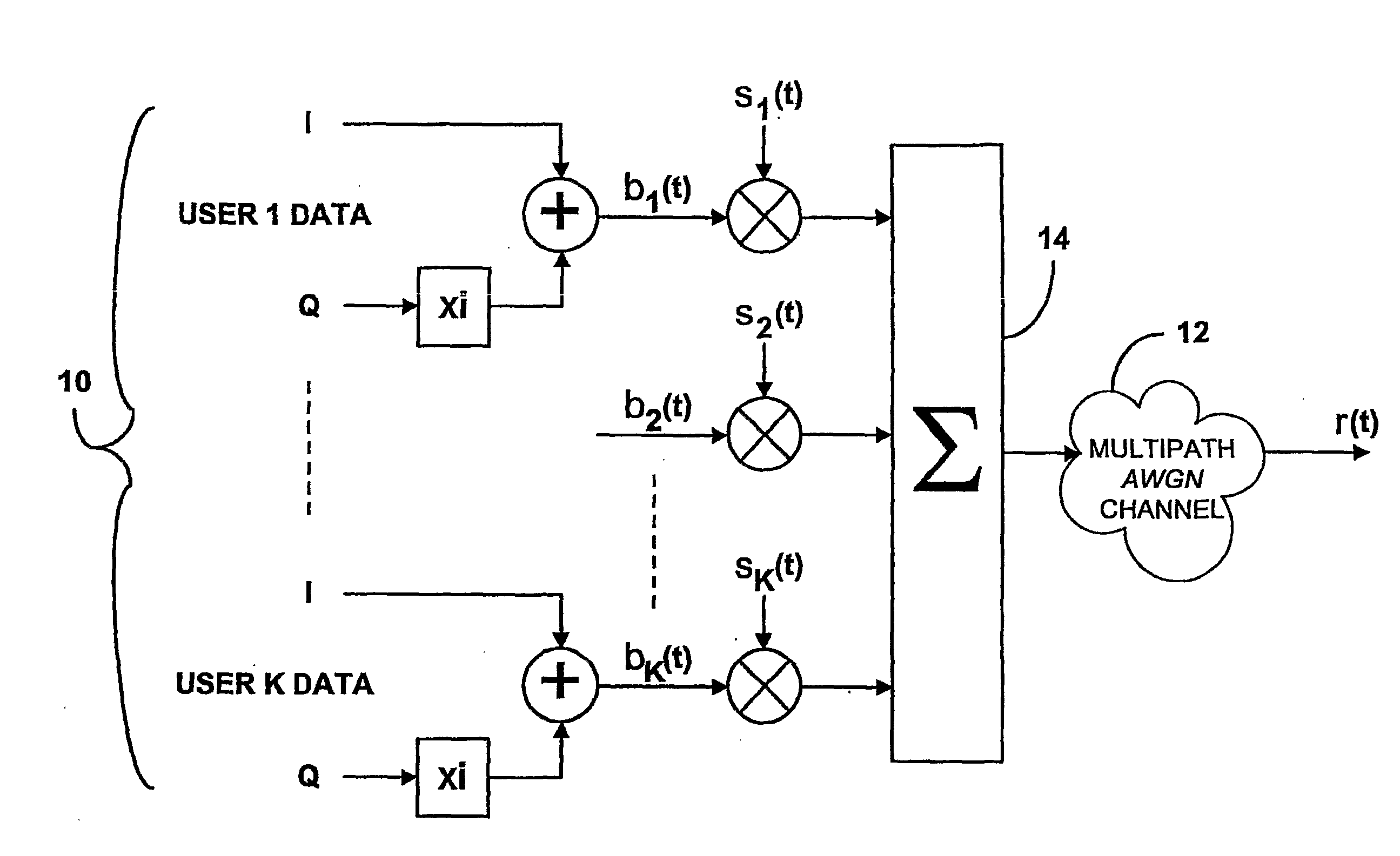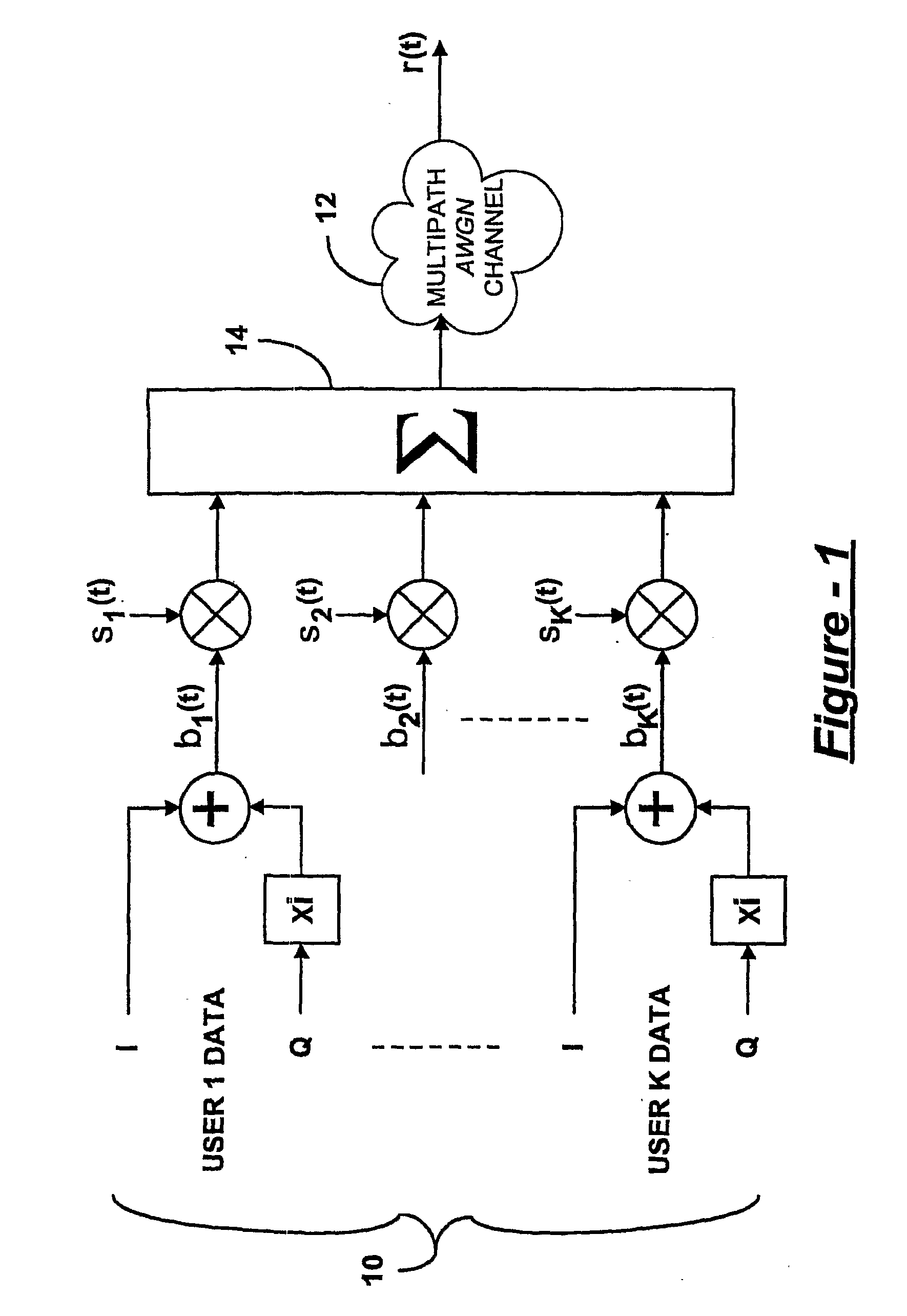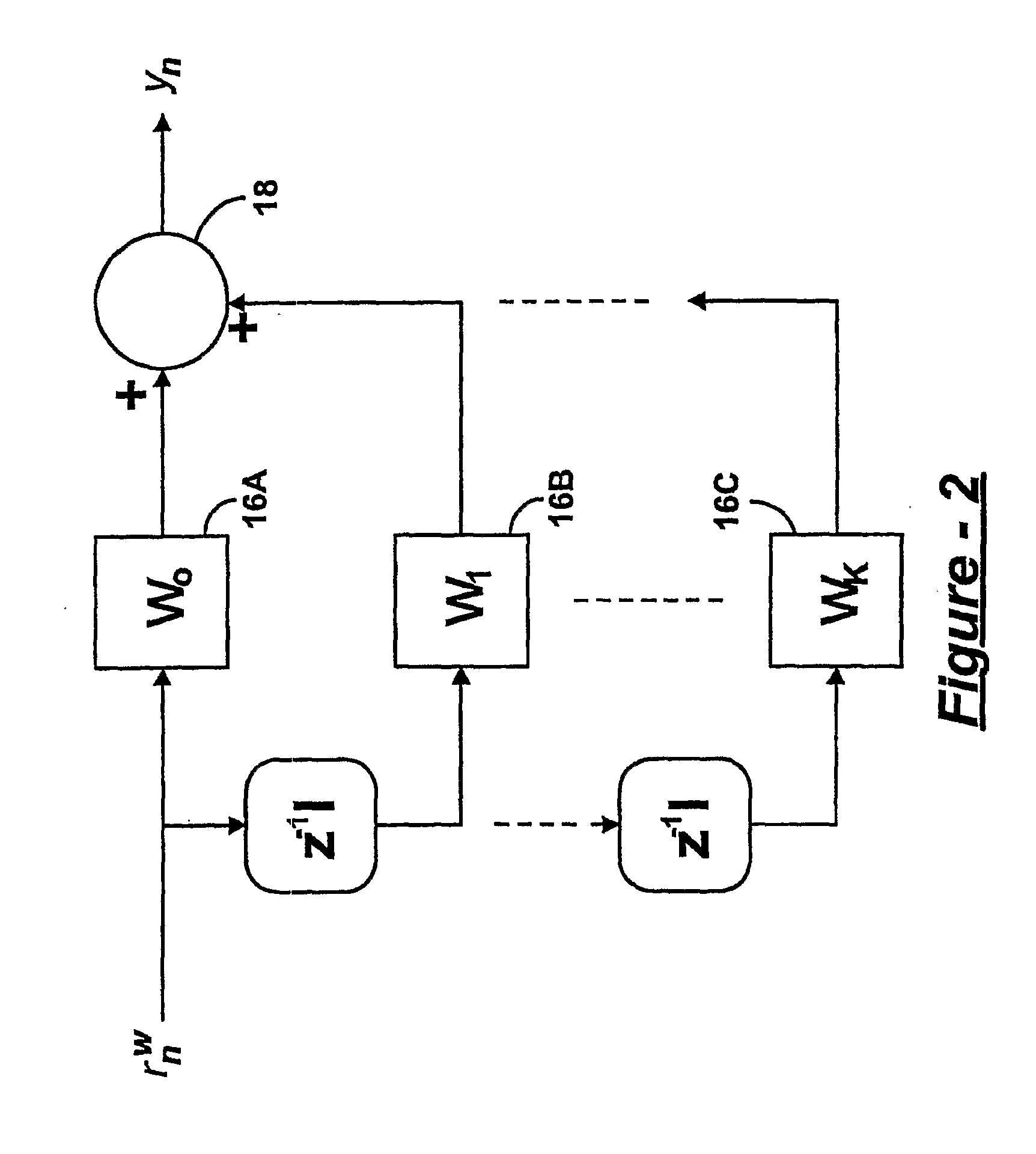Multi-user detection in cdma systems
a multi-user detection and cdma technology, applied in the direction of amplitude demodulation, digital transmission, electrical equipment, etc., can solve the problems of long scrambling code, unsuitable wcdma downlink, and more involved implementation structures, etc., to achieve simple update structure, improve rake-bsr performance, and reduce latency
- Summary
- Abstract
- Description
- Claims
- Application Information
AI Technical Summary
Benefits of technology
Problems solved by technology
Method used
Image
Examples
second embodiment
[0031] In a second embodiment discussed with reference to FIG. 3 and hereinafter referred to as feedback configuration I, the output is estimated by yn=W0-1(rnw-∑k=1KWkyn-k)(17)
The update law for this structure using the natural gradient are given for the matrix W0 by
ΔW0∝−W0(I−φ(yn)ynH) (18)
While for the feedback matrices Wk, the update law is
ΔWk∝W0(φ(yn)yn−kH) (19)
for k=1,2, . . . , K. The matrices in this case are also initialized in a fashion similar to the feedforward case. However, note that at least one matrix inversion is required in this formulation.
third embodiment
[0032] In a third embodiment discussed with reference to FIG. 4 and hereinafter referred to as feedback configuration II, the feedback configuration implements the feedback structure without the need for any matrix inversion. For this feedback configuration II, the BMUD stage output is computed as yn=W0rnw-∑k=1KWkyn-k(20)
The update laws for this feedback structure are given by
ΔW0∝(I−φ(yn)ynH)W0 (21)
ΔWk∝(I−φ(yn)ynH)Wk+φ(yn)yn−kH (22)
again, k=1,2, . . . , K, where K here is the maximum number of filter matrices / taps.
[0033] In case the channel is known or can be estimated, the performance of the proposed BMUD computational techniques may be adjusted by the diagonalization of the absolute value of the global transfer function. The global transfer function presents the combined effect of the complex mixing and demixing transfer functions. For the two symbol convolutive models for the case of max(τL)≦G. the global transfer function for the natural gradient computational technique...
PUM
 Login to View More
Login to View More Abstract
Description
Claims
Application Information
 Login to View More
Login to View More - R&D
- Intellectual Property
- Life Sciences
- Materials
- Tech Scout
- Unparalleled Data Quality
- Higher Quality Content
- 60% Fewer Hallucinations
Browse by: Latest US Patents, China's latest patents, Technical Efficacy Thesaurus, Application Domain, Technology Topic, Popular Technical Reports.
© 2025 PatSnap. All rights reserved.Legal|Privacy policy|Modern Slavery Act Transparency Statement|Sitemap|About US| Contact US: help@patsnap.com



